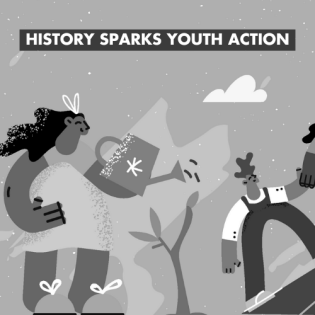Exploring the Timeline of US Philanthropy
How do philanthropy actions of the past influence the ways we take action to make a better and more equitable world?
This unit of lessons guides the exploration of Learning to Give's History of US Philanthropy timeline. Questions and activities prompt critical thinking, empathy, and youth action for a better world.
The Free Breakfast for Children Program of the 1960s exemplified mutual aid and differed from traditional charity while still being a form of philanthropy. We discover and learn how the people of a community most affected by issues, including young people, are sometimes the most able to find ways forward to address needs.
Explore the role of philanthropy in responding to emergencies, specifically personal and group efforts to support communities during the COVID-19 pandemic.
Settlement houses aimed to improve the lives of community members by addressing social challenges and promoting social welfare. In this lesson, we explore how they addressed the needs of the community where government efforts fell short. Many communities still have similar programs.
With similar motivations to present-day refugees, African Americans moved north in the mid-1800s to escape slavery and unsafe living conditions in the South. Detroit was an important location where Conductors on the Underground Railroad helped thousands to cross the Detroit River into Canada. In this lesson, we use visual literacy to analyze public art monuments that commemorate historical people and the personal risks that brought people to safety in Canada.
In this lesson, the learners tell stories of two events in history: a current event from their own point of view and an earlier significant event shared by an older friend or relative. They compare and evaluate how philanthropy responded to each event as well as how they each disrupted education, created fear, brought the community together, and made lasting changes. They also learn about primary and secondary sources and reflect on the lenses through which history is preserved.
